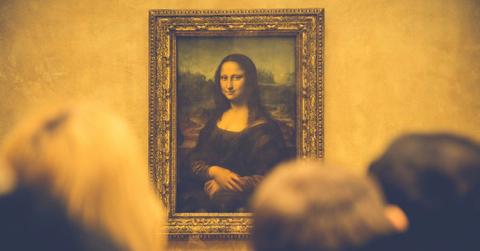Who Was the Real Mona Lisa? 500 Years Later, New Evidence Suggests Experts Have It All Wrong

Who was Mona Lisa? A new theory has emerged!
In the realm of Renaissance art, Leonardo da Vinci's Mona Lisa stands as an unrivaled icon, encapsulating the cultural flourishing of its era. Beyond its artistic mastery, the painting's intrigue is heightened by the mystery of its subject's identity.
Traditionally linked to Lisa Gherardini, the wife of a Florentine silk merchant, another compelling theory suggests Isabella of Aragon as the true sitter, according to The Conversation.
Isabella, born into the House of Aragon in Naples in 1470, became deeply involved in Italian politics through her marriage to Gian Galeazzo Sforza, Duke of Milan.
This theory is supported by stylistic analyses and historical connections. For instance, Robert Payne's biography of Leonardo highlights studies resembling Isabella, while Lillian F. Schwartz's x-ray analysis reveals an initial sketch beneath the painting, thought to depict Isabella.
Art historians Maike Vogt-Luerssen and Jerzy Kulski further argue that symbols and mourning attire in the painting align with Isabella’s life.
They suggest the Mona Lisa represents a woman’s journey through triumph and tragedy rather than a commissioned portrait.
- What Lies Beneath: NASA Scientist Believes Aliens May Have Found 'Perfect' Hiding Spot in Earth's Oceans
- Global Threat: Russia Insider Warns West of 'World War Using Nuclear Weapons' Amid Escalating Support for Ukraine
- Countdown to Disaster? Ex-NATO Official Warns Russia, Iran and China Could Wage WWIII in Just Years
It has been noted that the Mona Lisa transcends traditional portraiture, embodying Leonardo’s ideal and a deeply personal project for him.
Reevaluating the Mona Lisa’s context through Isabella’s lens elevates her from a background figure to a woman of courage and complexity.
Never miss a story — sign up for the Front Page Detectives newsletter. Be on the scene the moment news breaks.
It also invites reflection on the roles of women in the Renaissance, challenging narratives that minimize their impact.
Thus, the Mona Lisa stands as a legacy of the women who shaped the Renaissance.
Become a Front Page Detective
Sign up to receive breaking
Front Page Detectives
news and exclusive investigations.
